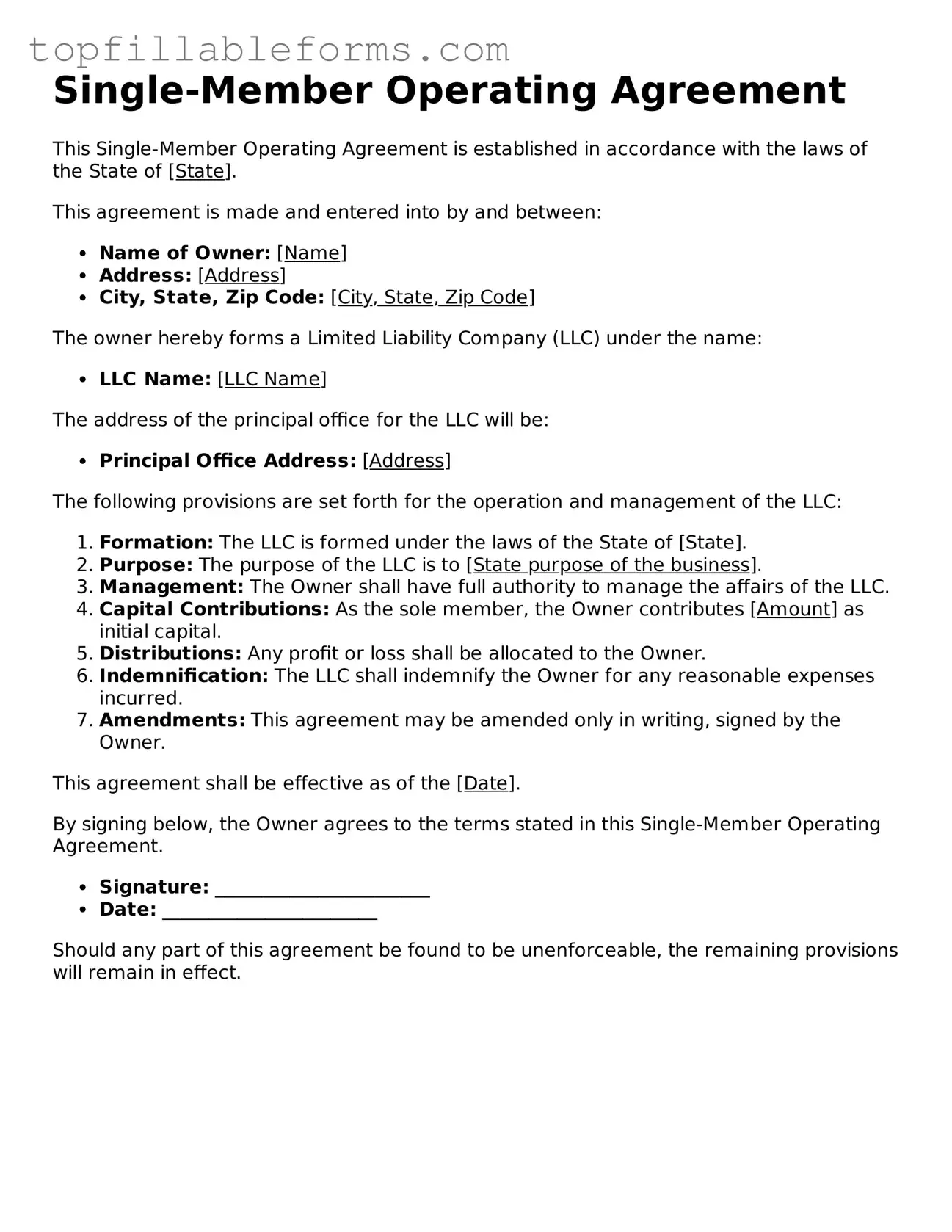Single-Member Operating Agreement
This Single-Member Operating Agreement is established in accordance with the laws of the State of [State].
This agreement is made and entered into by and between:
- Name of Owner: [Name]
- Address: [Address]
- City, State, Zip Code: [City, State, Zip Code]
The owner hereby forms a Limited Liability Company (LLC) under the name:
The address of the principal office for the LLC will be:
- Principal Office Address: [Address]
The following provisions are set forth for the operation and management of the LLC:
- Formation: The LLC is formed under the laws of the State of [State].
- Purpose: The purpose of the LLC is to [State purpose of the business].
- Management: The Owner shall have full authority to manage the affairs of the LLC.
- Capital Contributions: As the sole member, the Owner contributes [Amount] as initial capital.
- Distributions: Any profit or loss shall be allocated to the Owner.
- Indemnification: The LLC shall indemnify the Owner for any reasonable expenses incurred.
- Amendments: This agreement may be amended only in writing, signed by the Owner.
This agreement shall be effective as of the [Date].
By signing below, the Owner agrees to the terms stated in this Single-Member Operating Agreement.
- Signature: _______________________
- Date: _______________________
Should any part of this agreement be found to be unenforceable, the remaining provisions will remain in effect.
